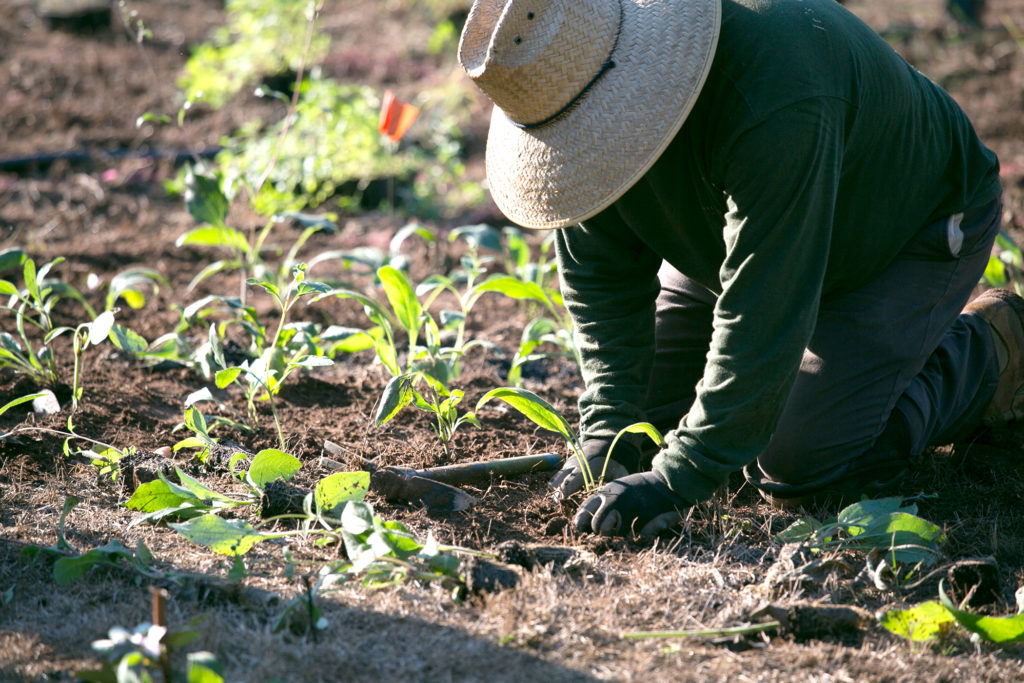The State Botanical Garden of Georgia, a UGA public service and outreach unit, completed its first major planting of native grasses and wildflowers as part of a Piedmont prairie restoration project.
In September, more than 10,000 plugs grown from seed at the Mimsie Lanier Center for Native Plant Studies at the UGA garden were planted at a site named Prairie on the Hill.
“This planting actually represents the last stage of a five-year cycle,” said Heather Alley, conservation horticulturist at the botanical garden. “We first had to determine the species to use. Then, we had to find the plants, collect the seeds from wild population, figure out how to grow them and then increase the seeds each year. It really takes a village.”
All the plants are native to the Georgia Piedmont and are critical as migration corridors for the birds and insects that are essential pollinators for this region of the state.
Faculty and staff from the botanical garden worked alongside employees from the Gainesville Fockele Garden Co. on the project, which was funded by a three-year grant from the federal Institute of Museum and Library Services.
“This habitat also supports ground nesting birds, such as turkey, quail, grouse and snipe,” said Jennifer Ceska, conservation coordinator at the botanical garden. “We have seen declines in those populations over the last 50 years, and these species are considered to be high priority for
conservation managers.”
As part of the garden’s commitment to education, the Prairie on the Hill will be used as a teaching and demonstration area for those who want to learn more about native habitat restoration. Ceska’s hope is that landowners, particularly large land-holding organizations, will incorporate what they learn into their environmental practices.
All of this work feeds into the goals of the Georgia Native Plant Initiative, established in 2010. By using the growing knowledge base of native habitat restoration and the types needed to sustain them, those working at the Center for Native Plants can partner with landscapers, land and roadside managers, and commercial property owners to transform landscapes.
The botanical garden’s habitat restoration program goes beyond the Prairie on the Hill. While one project involves the removal of invasive species from the understory of its floodplain forest, another has been a source of research for Lauren Muller, a graduate assistant studying horticulture. Muller’s project is determining the best way to prepare a site for establishing milkweed, an important host plant for rapidly dwindling populations of monarch butterflies. The project concluded with a planting in October at Panola Mountain State Park in Stockbridge.
“Our habitat restoration program, and particularly our Prairie on the Hill, feed into the research, education and display efforts we promise to fulfill here at the garden,” said Jim Affolter, director of research. “And at the end of the day, we are guiding the research of our students and providing the public with a beautiful prairie meadow to explore.”
